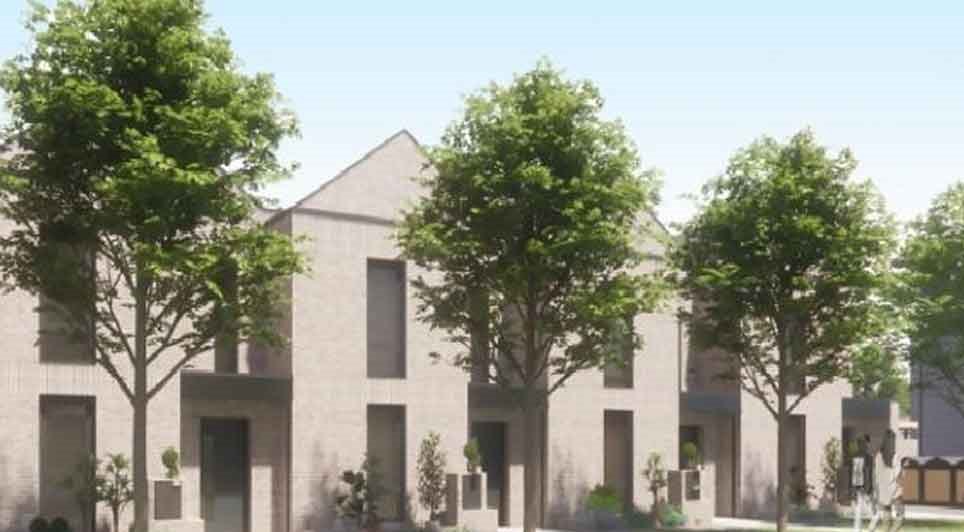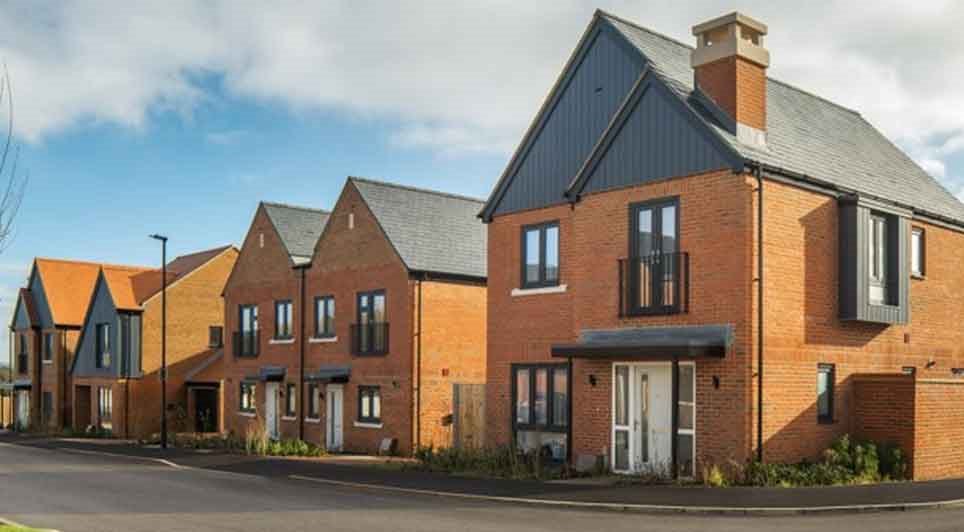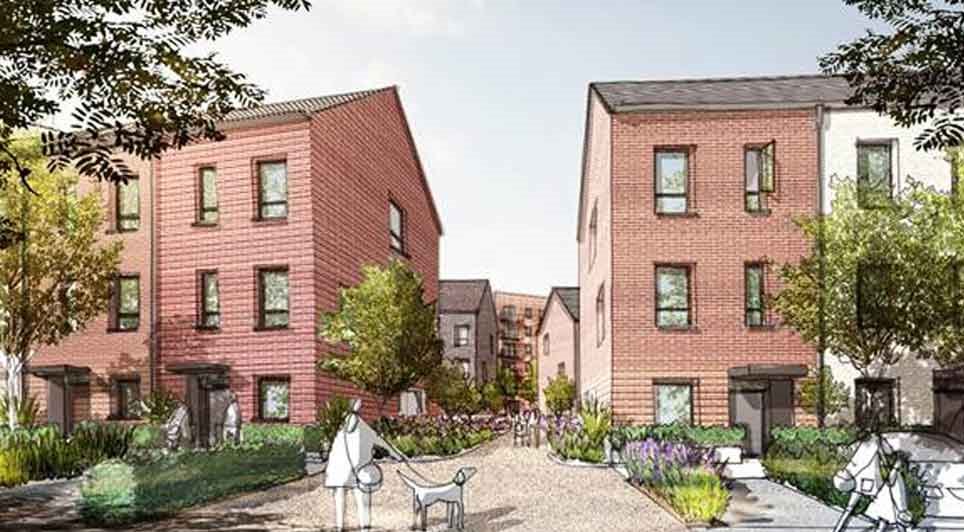Construction News
13/05/2014
Lower Your CO2 Footprint With Sustainable Shading
A major study was undertaken by a member of BVST, the Austrian shading association, to calculate the CO2 footprint for external venetian blinds.
This particular sun protection device is popular in central Europe mainly because of its flexibility in controlling the energy and entry of light depending on the day and the season. It is now also becoming recognised in the UK as essential for passive house and low energy compliance.
The study showed that an external venetian blind will save around 8.5 tonnes of CO2 over its life cycle – and yet creates only 150 kg of CO2 from production to disposal.
This means that it saves nearly 60 times its CO2 emissions footprint over a typical 20-year life.
These significant savings are derived from three factors:
Firstly in the summer the venetian blind reduces the solar heat very effectively, so that the need for mechanical cooling (with correspondingly high CO2 emissions) is mitigated or even negated.
Secondly, in cold weather during the day the blind can be raised to allow the sun's warming rays into the interior and then lowered at night in the closed position, to reduce heat losses. A zero-energy building or passive house that covers 20% or more of its heating.
Thirdly with this blind type natural daylight can be harvested as a free energy light source that can, for example, reduce the power required for lighting in offices and schools by up to 80%.
Footprint of a Venetian Blind
A major study was undertaken by a member of the BVST to calculate the CO2 footprint for venetian blinds. This particular sun protection device is popular in central Europe mainly because of its flexibility in controlling the energy and entry of light depending on the day and the season. According to the Institute of Applied Logistics (IAL) at the University of Applied Sciences Würzburg-Schweinfurt, a venetian blind will save around 8.5 tonnes of CO2 over its life cycle – and yet creates only 150 kg of CO2 from production to disposal.
This means that it saves nearly 60 times its CO2 emissions footprint over a typical 20-year life. The study was commissioned by Warema from Marktheidenfeld and the calculation was carried out according to international performance measurement standards.
These significant savings are derived from three factors:
Firstly in the summer the venetian blind reduces the solar heat very effectively, so that the need for mechanical cooling (with correspondingly high CO2 emissions) is mitigated or even negated.
Secondly, in cold weather during the day the blind can be raised to allow the sun's warming rays into the interior and then lowered at night in the closed position, to reduce heat losses. A zero-energy building or passive house that covers 20% or more of its heating.
Thirdly with this blind type natural daylight can be harvested as a free energy light source that can, for example, reduce the power required for lighting in offices and schools by up to 80%.
Gerstmann concludes: "The result of these studies demonstrates the enormous energy saving potential of external shading. It also highlights just how important variable shading systems are f CO2 Footprint of a Venetian Blind.
Sustainable Shading
A major study has been undertaken by a member of the Austrian Trade Association, BVST, to calculate the CO2 footprint for external venetian blinds. According to the Institute of Applied Logistics (IAL) at the University of Applied Sciences Würzburg-Schweinfurt, an external venetian blind will save around 8.5 tonnes of CO2 over its life cycle – and yet creates only 150 kg of CO2 from production to disposal.
This means that it saves nearly 60 times its CO2 emissions footprint over a typical 20-year life.
The study was commissioned by Warema from Marktheidenfeld and the calculation was carried out according to international performance measurement standards.
These significant savings are derived from three factors:
Firstly in the summer the venetian blind reduces the solar heat very effectively, so that the need for mechanical cooling (with correspondingly high CO2 emissions) is mitigated or even negated.
Secondly, in cold weather during the day the blind can be raised to allow the sun's warming rays into the interior and then lowered at night in the closed position, to reduce heat losses. A zero-energy building or passive house that covers 20% or more of its heating.
Thirdly with this blind type natural daylight can be harvested as a free energy light source that can, for example, reduce the power required for lighting in offices and schools by up to 80%.
Gerstmann concludes: "The result of these studies demonstrates the enormous energy saving potential of external shading. It also highlights just how important variable shading systems are for our climate zones to regulate the heat like a thermostat at the window. Similarly they act like a dimmer switch to the control the entry of light."
or our climate zones to regulate the heat like a thermostat at the window. Similarly they act like a dimmer switch to the control the entry of light."
For more details please visit www.hallmarkblinds.co.uk or contact info@hallmarkblinds.co.uk
This particular sun protection device is popular in central Europe mainly because of its flexibility in controlling the energy and entry of light depending on the day and the season. It is now also becoming recognised in the UK as essential for passive house and low energy compliance.
The study showed that an external venetian blind will save around 8.5 tonnes of CO2 over its life cycle – and yet creates only 150 kg of CO2 from production to disposal.
This means that it saves nearly 60 times its CO2 emissions footprint over a typical 20-year life.
These significant savings are derived from three factors:
Firstly in the summer the venetian blind reduces the solar heat very effectively, so that the need for mechanical cooling (with correspondingly high CO2 emissions) is mitigated or even negated.
Secondly, in cold weather during the day the blind can be raised to allow the sun's warming rays into the interior and then lowered at night in the closed position, to reduce heat losses. A zero-energy building or passive house that covers 20% or more of its heating.
Thirdly with this blind type natural daylight can be harvested as a free energy light source that can, for example, reduce the power required for lighting in offices and schools by up to 80%.
Footprint of a Venetian Blind
A major study was undertaken by a member of the BVST to calculate the CO2 footprint for venetian blinds. This particular sun protection device is popular in central Europe mainly because of its flexibility in controlling the energy and entry of light depending on the day and the season. According to the Institute of Applied Logistics (IAL) at the University of Applied Sciences Würzburg-Schweinfurt, a venetian blind will save around 8.5 tonnes of CO2 over its life cycle – and yet creates only 150 kg of CO2 from production to disposal.
This means that it saves nearly 60 times its CO2 emissions footprint over a typical 20-year life. The study was commissioned by Warema from Marktheidenfeld and the calculation was carried out according to international performance measurement standards.
These significant savings are derived from three factors:
Firstly in the summer the venetian blind reduces the solar heat very effectively, so that the need for mechanical cooling (with correspondingly high CO2 emissions) is mitigated or even negated.
Secondly, in cold weather during the day the blind can be raised to allow the sun's warming rays into the interior and then lowered at night in the closed position, to reduce heat losses. A zero-energy building or passive house that covers 20% or more of its heating.
Thirdly with this blind type natural daylight can be harvested as a free energy light source that can, for example, reduce the power required for lighting in offices and schools by up to 80%.
Gerstmann concludes: "The result of these studies demonstrates the enormous energy saving potential of external shading. It also highlights just how important variable shading systems are f CO2 Footprint of a Venetian Blind.
Sustainable Shading
A major study has been undertaken by a member of the Austrian Trade Association, BVST, to calculate the CO2 footprint for external venetian blinds. According to the Institute of Applied Logistics (IAL) at the University of Applied Sciences Würzburg-Schweinfurt, an external venetian blind will save around 8.5 tonnes of CO2 over its life cycle – and yet creates only 150 kg of CO2 from production to disposal.
This means that it saves nearly 60 times its CO2 emissions footprint over a typical 20-year life.
The study was commissioned by Warema from Marktheidenfeld and the calculation was carried out according to international performance measurement standards.
These significant savings are derived from three factors:
Firstly in the summer the venetian blind reduces the solar heat very effectively, so that the need for mechanical cooling (with correspondingly high CO2 emissions) is mitigated or even negated.
Secondly, in cold weather during the day the blind can be raised to allow the sun's warming rays into the interior and then lowered at night in the closed position, to reduce heat losses. A zero-energy building or passive house that covers 20% or more of its heating.
Thirdly with this blind type natural daylight can be harvested as a free energy light source that can, for example, reduce the power required for lighting in offices and schools by up to 80%.
Gerstmann concludes: "The result of these studies demonstrates the enormous energy saving potential of external shading. It also highlights just how important variable shading systems are for our climate zones to regulate the heat like a thermostat at the window. Similarly they act like a dimmer switch to the control the entry of light."
or our climate zones to regulate the heat like a thermostat at the window. Similarly they act like a dimmer switch to the control the entry of light."
For more details please visit www.hallmarkblinds.co.uk or contact info@hallmarkblinds.co.uk

14/02/2025
Nottingham City Council has signed a £12.6 million contract with Balfour Beatty to deliver an 85-metre long walking and cycling bridge over the River Trent.
The bridge, which will span the river at 20 metres high, is set to become a key infrastructure link, connecting the north side of the river—wh
14/02/2025
GMI Construction Group has officially broken ground on one of the largest regeneration projects in Grimsby's history, the transformation of Freshney Place into a vibrant leisure, retail, and food hub, complemented by a modern market.
The redevelopment, backed by both the Government and North East L

14/02/2025
Salford City Council has approved plans for the construction of 25 affordable homes across two locations in the city, aimed at providing much-needed supported accommodation for young people who are homeless or at risk of homelessness.
The first development, located on Bridgewater Street in Little H

14/02/2025
Work has officially begun on a new 25-metre swimming pool at Pentwyn Leisure Centre, Cardiff, as part of an exciting upgrade to the facility.
The project, being carried out by Cardiff Council’s appointed contractor, is expected to be completed by the end of the year.
The new pool will feature a r

14/02/2025
Homebuilder Cala has launched a new business division, Cala Southern, as part of its growth strategy across the South of England.
Cala Southern will spearhead the company's westward expansion, enhancing Cala's presence in Dorset, Hampshire and Southern Wiltshire, to meet strong demand for high-qual

14/02/2025
Harrow is set to see the creation of 149 new family homes, including new council properties, following the approval of phase one of the Byron Quarter development.
In a partnership between the London Borough of Harrow and Wates Residential, the project will transform underutilised council-owned land

14/02/2025
Barhale and Flannery have partnered with JCB to conduct the first in-field trial of the equipment manufacturer's groundbreaking hydrogen-powered backhoe loader.
The trial, which took place at Lower Penn, a Severn Trent Water project on the outskirts of Wolverhampton, saw the innovative 3CX loader p

14/02/2025
McLaren Construction Midlands and North is making impressive progress on a major student accommodation development at 77 Talbot Street, Nottingham, with the £25.8m project set to welcome students by September 2025.
The nine-storey building, designed by Leonard Design Architects, is being constructe

14/02/2025
Manchester has been allocated £1.5 million by the Government to support the next phase of regeneration in Collyhurst, located in north Manchester.
The funding forms part of the larger Victoria North regeneration programme, a transformative project aimed at revitalising the area.
The grant will be

14/02/2025
Construction work has officially commenced on Overstone Park Primary School, a state-of-the-art, non-selective, state-funded educational facility at the Overstone Leys development in north-east Northampton.
The milestone was marked by a groundbreaking ceremony which signalled the start of a major p
 UK
UK Ireland
Ireland Scotland
Scotland London
London











